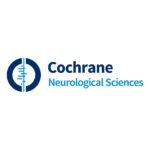
Do not perform supra-aortic trunks ultrasound to patients who have experienced transient loss of consciousness in the absence of other neurological symptoms and with normal neurological examination. Adapted from the American Academy of Neurology.
A vertebrobasilar TIA (transient ischemic attack) can cause loss of consciousness, but it is always accompanied by neurological signs such as motor or sensory loss in the face and / or limbs, coordination impairment, homonymous lateral hemianopia, balance and gait disturbances, drop attacks, diplopia, dysphagia, dysarthria or vertigo. Carotid occlusion does not cause fainting but focal neurological signs such as unilateral weakness. The radiological study of the carotids is unable to identify the cause of the loss of consciousness and increases costs. Loss of consciousness is a frequent symptom and experienced by 40% of the population during life.
Sources
1. ESC Guidelines for the diagnosis and management of syncope European Heart Journal, Volume 39, Issue 21, 01 June 2018, Pages 1883–1948
2. Shen W-K, Sheldon RS, Benditt DG, Cohen MI, Forman DE, Goldberger ZD, Grubb BP, Hamdan MH, Krahn AD, Link
MS, Olshansky B, Raj SR, Sandhu RK, Sorajja D, Sun BC, Yancy CW. 2017 ACC/AHA/HRS guideline for the evaluation and management of patients with syncope: a report of the American College of Cardiology/American Heart Association Task Force on Clinical Practice Guidelines and the Heart Rhythm Society. Circulation. 2017;136:e60–e122. DOI: 10.1161/CIR.0000000000000499.
Download
PDFAttention. Please note that these items are provided only for information and are not intended as a substitute for consultation with a clinician. Patients with any specific questions about the items on this list or their individual situation should consult their clinician.


Recent Comments